
11 minute read
Stars rising in the East
The rise of Amsterdam Oost and the story of how three entrepreneurs used hospitality to change an entire neighborhood for the better.
Words by HANNAH FÜLLENKEMPER Pictures by ALAN DANIEL ARCHUTOWSKI
Advertisement
Anyone will tell you: Amsterdam Oost (East) wasn’t a place to take the kids. It was a backwater chock-full of the sort of stores you didn’t feel anyone really wanted you to enter. Not anymore, though—not when so much of Oost has become about brunch, craft beers, and places where you buy coffee that says something about your personality. All that remains of the Oost of yesterday is an eagerness to speak of it in the same breath as Berlin: a city symbol of cool rising out of ethnic stores and concrete. Trouw, Amsterdam’s most convincing stab at a bit of Berlin, has moved out; and Amsterdam’s most expensive effort at being a bit of Berlin, the Volkshotel, has moved in. The Student Hotel accommodates all the kids that have flocked to the Wibautstraat (since when?), pretending they are in Berlin; a second building is set to open in early 2016. It wasn’t always like this. Amsterdam, already small, used to be a lot smaller because of the fact no one ever really considered going further east than—perhaps— the start of the Wibautstraat. Even five years ago, when my boyfriend was looking to buy a house, Oost was what Noord is now: cheap and far. Now, it’s the new frontier for any would-be café, bar, or shop owner. But before we all got there, the Three Wise Men of the East did. Jason Berg, Riad Farhat, and Piet van der Graaf said, “Let us set up shop in Oost.” And it was good. Seven years later, they have gone from strength to strength. We spoke to Riad Farhat, one-third of the Wise Men, about how it all started.
Who are the Three Wise Men of the East and how did you meet? I met Jason Berg in 1997. We used to work in a café called Café Elsa in Oost, which was owned by Piet van der Graaf. We worked there about 10 to 12 years, starting off as busboys at 17 and moving up. The whole time we were getting an education without even knowing it. We formalized this when we studied Hotel Management in The Hague and continued to work on the weekends. Then, when we got a bit older and started to think about our futures, we thought maybe it was time to start our own business. We loved what we did, so why not take it to the next level? We both did internships (me in Mumbai, Jason in Shanghai) and when we returned, we started talking about having our own bar.
Café Maxwell on Beukenplein was your first stab at Oost, correct? Yes. We opened Maxwell when we were 27—but it wasn’t as easy as that. Our schooling was expensive and we both had a lot of debt. We’d found the spot in 2007 but the bank wouldn’t finance us without collateral. So we went back to our old mentor and employer, Piet, and asked him for advice. Turns out he was up for a new
adventure, could provide us with the backup, and we got a loan. On 1 January 2008 we opened Café Maxwell.
What was Oost like back then? Oost was an achterbuurt—it was behind. It was full of all kinds of people and Beukenplein was a tough square. There was no other café infrastructure there so we had to start from scratch, which took a while. People had to get to know us and it really took us half or three fourths of our first year to set our standard, for people to trust us. Basically it was a matter of making ends meet until the first summer. Then it picked up and followed through to the next winter. We’d managed to make a name in the neighborhood.
Why did you set your sights on Oost? Our philosophy was to do something different in the neighborhood we were in. There were a lot of small, typical Amsterdam places in Oost; brown cafés, shady bars, run-down stuff, real Amsterdams (typical
Amsterdam), but nothing for younger people. Nothing a little more international. So we thought we could bring that and create something for everyone.
Your “something for everyone” philosophy is evident in the sheer number of different places you now have. Yes, each of them is different. When we open something, we think about what’s needed in a certain area. Mentally, we divide Oost into three hospitality clusters around Beukenplein, the Linnaeustraat and the Javastraat. These three streets divide Oost into three different areas: the Dapperbuurt, the Indischebuurt and the Oosterparkbuurt. Before we think of a concept, we first look at what each cluster needs. So for instance, after Maxwell, we opened Café Kuijper on the Linnaeustraat. Before that it used to be a really old-fashioned Amsterdam bar. The previous owners were 86 and had literally worked themselves to death.
They were happy to take a rest. Our concept there was to take off the brown edge of the brown café and make a light brown café. You could say it was the new brown café. With De Biertuin, the plan was to create a gateway, a place that would attract people to the east. When we went on to win Het Parool’s Best Burger in Amsterdam in 2014, and the second best grilled chicken, people from all over were coming to check us, and the neighborhood, out. Our second angle was to make De Biertuin somewhere to explore the world in beers. We’d noticed that young people were sticking to lager and it was only the older people that would drink something a little more special. So we changed the vibe and stuck 60 to 70 craft beers on the menu alongside our taps. I think that kickstarted a lot of things in Amsterdam.
What’s your crowd at Bar Bukowski? Bukowski was to be the bar of the neighbourhood, what Cafe Kuijper was to the Linnaeustraat. But we wanted it to be a little more international, hence the name and the cocktail bar, Henry’s Bar. There wasn’t a place to drink cocktails in Oost, so we added to the vibe and it was an instant hit, also with the international media.
Then there’s Smokin’ Barrels down the road, and Eddy Spaghetti further down. Isn’t it difficult to have so many places so close to each other? It’s hugely important for each of our places to be totally different. Different look and feel, serve different stuff— even the people that work there are different. Your staff is the reflection of your guests; the people who work at Bukowski are more or less the same people who go to drink there. And sure, operating in a small area means it’s more important than ever to be careful about how we work. It’s all connected. Like when we first opened Kuijper, all kinds of people would come. Everyone and anyone. But when Bukowski opened, the vibe at Kuijper changed. All of a sudden people had a choice so they filtered out to where they identified themselves. Everyone should feel at home somewhere.
Who feels at home at Smokin’ Barrels? With Smokin’ Barrels, we want to bring high class to the middle. We serve lobsters and burgers, cocktails and beers, and the idea is to get the people who wouldn’t normally go out for lobsters and cocktails, but would go out for burgers and beers, to try it. So I feel we’re there to show people something new, whereas on either side of Smokin’ Barrels, at Bukowski and Maxwell, the vibe is different. It was so cool to watch: we really did bring something new. I always take a few shifts in service when we open a new place, and I saw all this claw meat coming back. People didn’t know how to eat lobster! They were leaving all that meat in the claw because they didn’t know it was there! Since then, we’ve trained our staff to show you the deal.
And Eddy’s? Opening Eddy’s reminded me of starting Maxwell’s. It was like starting all over again.

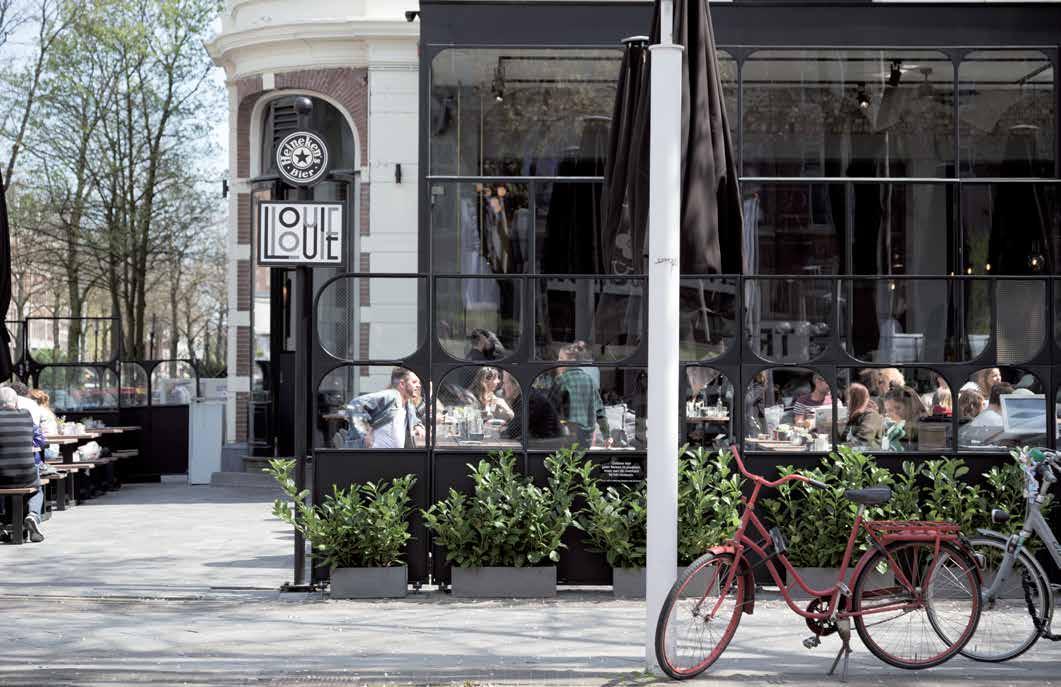
Just down the road? Yeah. One square down and you’re the only one on the square. Beukenplein already has the infrastructure: if you set up there and your product is good and fairly priced, you’ll probably be fine. Krugerplein is a different ball game but we hope entrepreneurs will start up there. That makes it better for everyone.
There seems to be the same or mighty similar infrastructure everywhere you look in Oost. Do you feel there’s too much of the same? That people are just rolling out a standard format? People have always done what works. Ten to 15 years ago there were thousands of your standard eetcafés (casual cafes with simple menus) serving kip saté (chicken skewers) and carpaccio. That people copy what they see working around them is normal. We’re fortunate that there are people with balls in Amsterdam. New things are opening around us every month: people putting their balls on the block to do something new. So I’m positive about this and even when things do become very similar, I believe that, eventually, people will choose with their stomachs.
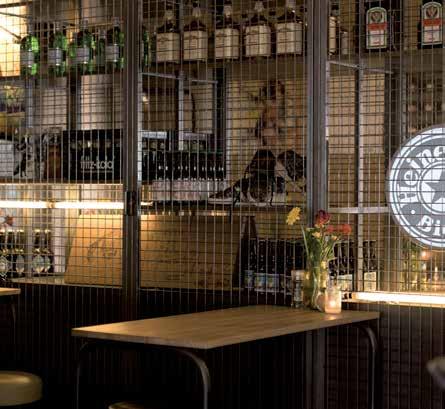
What do you think of all of Amsterdam’s attention on the New Oost? Will it change too quickly? We’re still at a point where things are pretty diverse in Oost. It’s not yet full. However, there’s always the fear that it could turn into something like de Pijp. Plus there are always copycats. What is bad is that the guys that copied the stuff that works in Oost and opened up their own version in the West, are now moving those same concepts back to Oost. People aren’t thinking. Or rather, I don’t think it’s a lack of vision but a lack of balls. We owe it to ourselves and everyone else to bring something new to the scene. So why would you open a burger bar opposite a burger bar?
So no more burger bars. What’s next? We opened Bar Basquiat on the Javastraat. Concept is simple: it’s a bar. There’s lots of good food around there already and we don’t want to compete, we want to add. So we’ll open during the day for breakfast and lunch but then it’s bar, bar, bar. We’re opening this with the guys behind Café’s Lux and Weber, which is such an honor. These guys started their cafés 20 years ago and were way ahead of their time. When I was young and thinking about my own place I’d go there and fantasize about what mine would be like. They’re real role models for lots of places. Then left of the Biertuin, East of Eden will become Louie Louie, a pub with South American food.
Thank you Riad Farhat for your time and sharing your story with us. Here’s to all those that got them balls on the Oost block. Special thanks to East experts eastsideamsterdam.metmik.nl for making the connection. ¢
3wo.nl
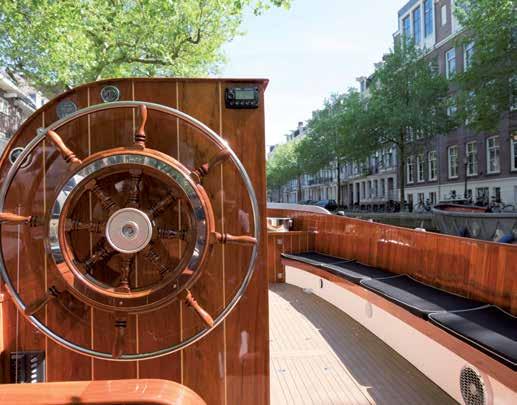

Admiring Amsterdam from the water in style
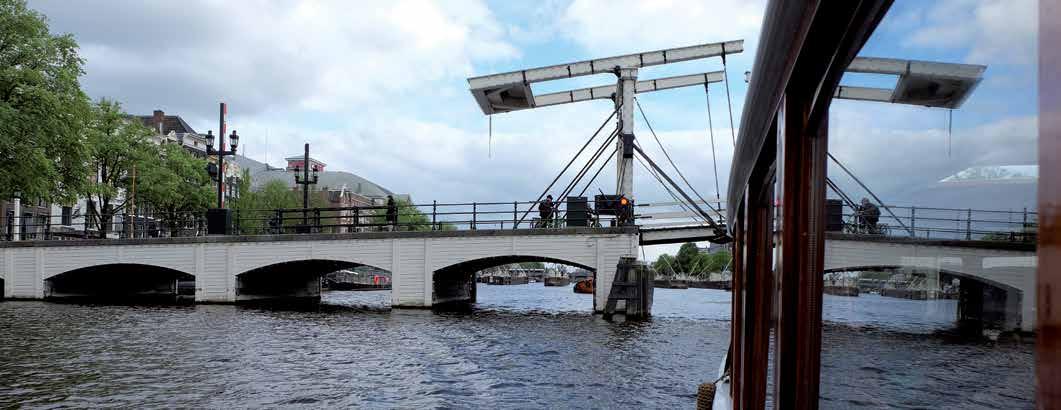
Amsterdam is known for its bikes, but did you know the city can be best admired from a ship on one of the many canals? With an open boat, which we call a sloep and a closed covered one, which is called a salon boot, we at Rederij Nassau offer unique experiences on the water. Both ships are electrically powered and can host up to 50 people. For any occasion, it’s the perfect way to cruise down Amsterdam with friends, family andcolleagues. Join one of the experienced skippers for an unforgettable experience.
rederijnassau.nl
Town talk
We explore Amsterdam neighborhoods through the eyes of locals. In collaboration with the photography duo on a hazy morning, we met the most inspiring locals, who guided us through their own neighborhood with pride and enthusiasm. Words by MIO VAN DER MEI Pictures by ON A HAZY MORNING
West – Bolo “Basically you could call Bos en Lommer ‘New Casablanca.’ I’ve seen the first immigrants arrive here in the 50s. First it was the Spaniards and Italians but then came the wave of Moroccan immigrants.” – Henk van Heezick & Mathilde van der Pol
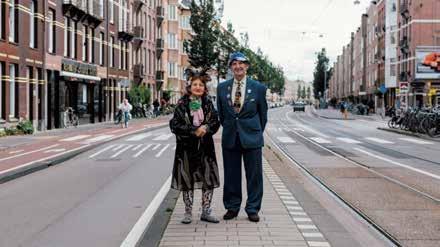
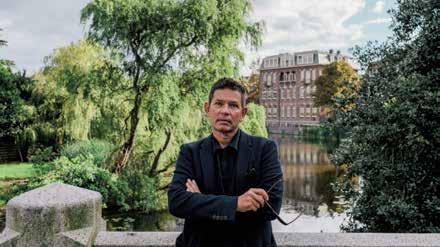
South - Willemspark “When we moved here 30 years ago it was an art & literature neighborhood. Now it has become a community of arty long-termers and banker-wankers new-schoolers.” – David Shah
North – Vogelbuurt “It’s like a village! One neighbor who we call opa (grandpa) is always sitting on the corner of the street in his wheelchair making small talk and being the neighborhood watchdog.” – Evelyn Grunau & Kay Berndt

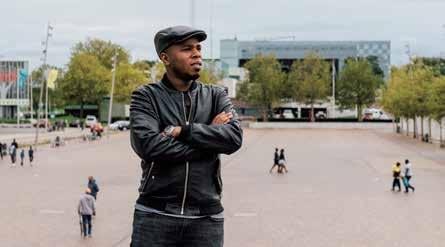
South-East - Amsterdamse poort “There’s a lively joyful spirit, and you can find the biggest music talents here. But people are also less fortunate and there’s not much faith in the police system, the community ‘solves’ the problems themselves.” – Jay Colin


